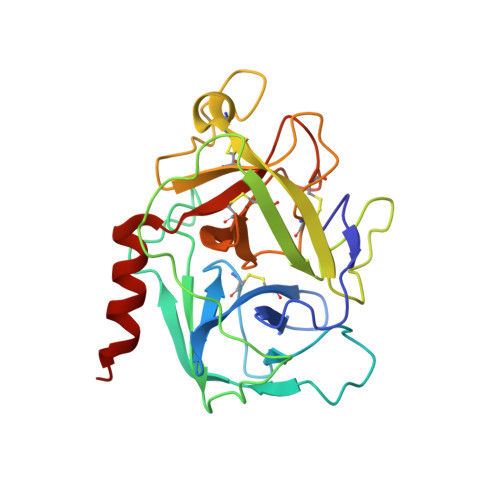Crystal structure of the apoptosis-inducing human granzyme A dimer
Hink-Schauer, C., Estebanez-Perpina, E., Kurschus, F., Bode, W., Jenne, D.(2003) Nat Struct Biol 10: 535-540
- PubMed: 12819770
- DOI: https://doi.org/10.1038/nsb945
- Primary Citation of Related Structures:
1OP8 - PubMed Abstract:
Granzyme A (GzmA) belongs to a family of trypsin-like serine proteases localized in cytoplasmic granules of activated lymphocytes and natural killer (NK) cells. In contrast to the related granzyme B (GzmB), GzmA forms a stable disulfide-linked homodimer and triggers target-cell death in a caspase-independent way. Limited proteolysis of a high-molecular-mass complex containing SET (also named putative HLA-associated protein II or PHAPII), PHAPI (pp32, leucine-rich acidic nuclear protein) and HMG2 by GzmA liberates NM23-H1, a Mg2+-dependent DNase that causes single-stranded breaks in nuclear DNA. By analyzing the dimeric GzmA structure at a resolution of 2.5 A, we determined the substrate-binding constraints and selective advantages of the two domains arranged as a unique functional tandem. The active sites of the two subunits point in opposite directions and the nearby noncatalytic surfaces can function as exosites, presenting substrates to the active site region of the adjacent partner in a manner analogous to staphylokinase or streptokinase, which present plasminogen to the cofactor-plasmin and cofactor-plasminogen complexes.
Organizational Affiliation:
Department of Neuroimmunology, Max Planck Institute of Neurobiology, Am Klopferspitz 18a, D-82152 Planegg-Martinsried, Germany.















